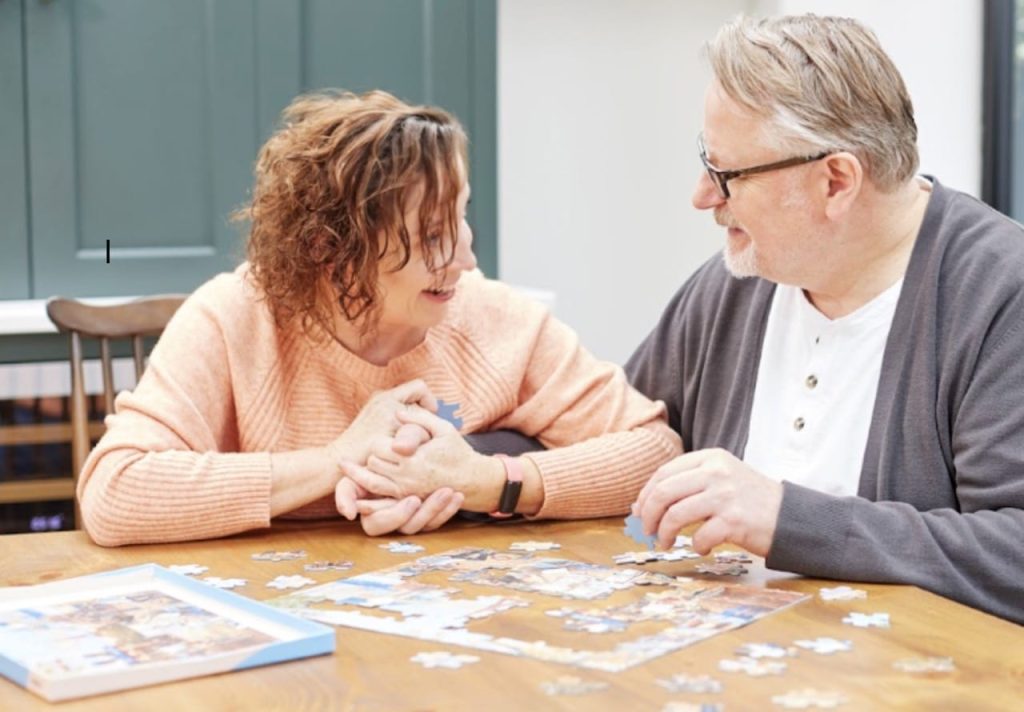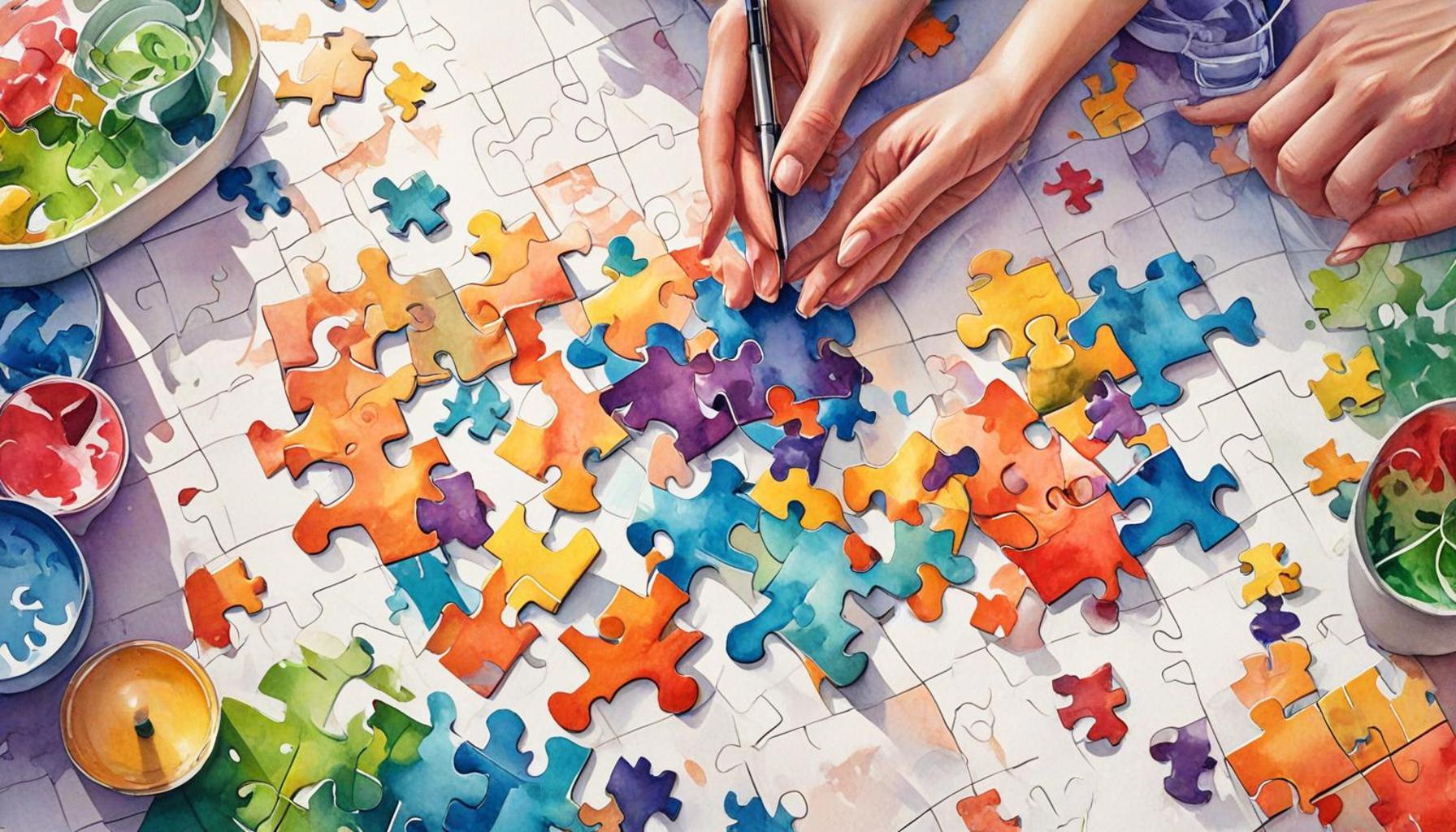Visual vs Auditory Puzzles Cognitive Stimulation Differences Explained

Exploring the Diverse Effects of Puzzles on Cognitive Skills
Puzzles are not just a source of entertainment; they are powerful tools for enhancing mental agility and stimulating cognitive functions. When it comes to choosing puzzles, it’s essential to recognize that different types can activate various areas of the brain, leading to distinct cognitive benefits. Understanding the characteristics of these puzzles can help optimize educational and mental health strategies in diverse settings, including those unique to Nigeria.
Visual puzzles, such as jigsaw puzzles or crosswords, predominantly engage areas of the brain responsible for spatial reasoning and pattern recognition. For instance, when piecing together a jigsaw, individuals must visualize the completed image and understand how different pieces fit together. This type of puzzle can improve one’s ability to see relationships and patterns in data, which is crucial in fields such as mathematics and engineering.
In contrast, auditory puzzles, like identifying sound patterns or participating in memory games, enhance memory retention and auditory processing. For example, a simple auditory puzzle might involve recalling a sequence of musical notes or matching sounds to their sources, which can significantly improve listening skills, a vital aspect in communication and collaboration in any setting.
- Visual Puzzles: These puzzles enhance spatial reasoning and pattern recognition, essential for tasks such as navigation and problem-solving.
- Auditory Puzzles: They help improve memory retention and auditory processing, which are important for academic success and effective communication.
- Example of a Visual Puzzle: Solving a Sudoku grid, where players utilize logic and deductive reasoning to fill in numbers accurately.
- Example of an Auditory Puzzle: Identifying melodies or sounds in a quiz format, challenging players to connect sounds with their origins.
In Nigeria, puzzles play a significant role in cultural games that often foster community spirit and unity. These games are not only enjoyable but also serve as educational tools. For example, local forms of puzzles—such as traditional board games incorporating problem-solving elements—can be used to teach young children mathematics or language skills in a playful manner. Such community engagement through puzzles is invaluable, as it combines cognitive stimulation with social interaction.
As we delve deeper into the cognitive implications of visual and auditory puzzles, it’s clear that recognizing their differences can help tailor educational approaches. For students, integrating visual puzzles into their learning can bolster analytical skills, while auditory puzzles can enrich communication abilities. For older adults, both types can serve as effective brain-training exercises, contributing to improved mental health and cognitive longevity.

The next time you pick up a puzzle, consider its unique benefits! Are you inclined toward visual challenges, or do you prefer deciphering auditory clues? Embracing a variety of puzzles can lead to well-rounded cognitive development, making the journey into the intriguing world of puzzles even more rewarding!
CHECK OUT: Click here to explore more
Understanding the Distinct Cognitive Pathways of Visual and Auditory Puzzles
The cognitive stimulation offered by visual and auditory puzzles varies significantly, due to the different brain processes they activate. A deeper examination of these differences reveals how each type of puzzle contributes uniquely to cognitive development, learning methods, and even daily functioning—insights that can be particularly beneficial for educators and learners in Nigeria.
Visual puzzles often leverage the brain’s capacity for visual-spatial reasoning. These puzzles demand skills such as recognizing shapes, colors, and patterns, which can translate into critical life skills like navigation and architecture. For instance, while tackling a jigsaw puzzle, players are required to envision the final image and analyze how individual pieces interlock, enhancing their spatial awareness and problem-solving abilities. This aligns closely with activities in fields like engineering, where visual aptitude is paramount. One research study suggests that engaging with visual puzzles can lead to significant improvements in cognitive performance, particularly in areas related to mathematics and logical reasoning. The ability to see relationships within complex data is a highly sought-after skill in many professional domains.
Conversely, auditory puzzles stimulate different regions of the brain focused on sound processing and memory retention. These puzzles come in various forms, such as musical quizzes or sound pattern recognition games. For example, when solving a puzzle that requires players to match sounds with their respective sources, participants enhance their auditory discrimination and memory skills. This kind of cognitive training can be especially vital for students in Nigeria as it plays a crucial role in language acquisition and literacy development. Children who frequently engage with auditory puzzles may find that their listening skills and overall academic performance improve significantly, making this form of stimulation valuable in classroom settings.
- Cognitive Benefits of Visual Puzzles: Enhances visual-spatial reasoning, critical thinking, and pattern recognition.
- Cognitive Benefits of Auditory Puzzles: Improves auditory processing, memory retention, and listening skills.
- Practical Example of a Visual Puzzle: Completing a Sudoku grid requires logical thinking and visualization.
- Practical Example of an Auditory Puzzle: Identifying a sequence of musical notes in a quiz format challenges listening abilities.
In the rich cultural tapestry of Nigeria, both types of puzzles are woven into various games and community activities. Traditional games often encourage problem-solving and collaboration, showcasing the dual benefits of cognitive and social stimulation. For example, local storytelling traditions can incorporate auditory puzzles that foster both memory and community bonding, allowing participants to draw connections between narratives and sounds. By adapting puzzles to cultural contexts, educators and parents can provide effective tools for cognitive development while also enriching social experiences for children and adults alike.
By recognizing the specific cognitive advantages tied to visual vs auditory puzzles, we can better craft educational strategies and cognitive exercises that align with individual strengths and learning preferences. Engaging with both types of puzzles not only encourages diverse cognitive growth but also enriches the overall learning experience across different age groups.
| Visual Puzzles | Auditory Puzzles |
|---|---|
| Enhances spatial reasoning and visual memory through imagery. | Promotes active listening skills and auditory processing. |
| Ideal for individuals who learn visually and prefer graphic representation. | Beneficial for those who thrive on verbal instructions and auditory cues. |
The intriguing realm of cognitive stimulation reveals distinct benefits from visual and auditory puzzles. Visual puzzles engage spatial cognition and leverage the brain’s capacity to manipulate images and patterns, fostering a robust memory system. They often entail jigsaw puzzles or mazes that require sustained attention and detail orientation. This enhances a person’s ability to visualize concepts and think creatively.Conversely, auditory puzzles challenge individuals to process sounds, music, or spoken instructions, invoking intense concentration and critical listening. Tasks may involve discerning melodies or identifying patterns in sounds, thereby sharpening an individual’s listening skills and auditory memory. This is particularly effective for enhancing language comprehension and verbal reasoning.Understanding how these two types of cognitive puzzles operate can guide educational approaches and therapeutic practices, motivating learners or those seeking mental agility to explore their strengths in either realm. This analysis not only uncovers the unique aspects of each type but also emphasizes the importance of incorporating diverse cognitive activities in daily life for optimal brain health.
SEE ALSO: Click here to read another article
The Impact of Visual and Auditory Puzzles on Learning and Development
Understanding the cognitive stimulation achieved through visual and auditory puzzles is crucial, especially in a diverse educational landscape like Nigeria. Cognitive development is not merely about enhancing problem-solving skills; it encompasses a broader spectrum of learning modalities that engage different perceptions and intelligence types. This is where visual and auditory puzzles offer beneficial insights into tailored educational strategies.
Visual puzzles, such as crosswords, mazes, and visual memory games, stimulate the occipital lobe—the brain’s visual processing center. Engaging with such puzzles can significantly improve a learner’s ability to interpret visual information, and this capability extends into fields that demand visual literacy, such as graphic design and architecture. Recent studies indicate that students who regularly engage in visual puzzle activities exhibit higher levels of creativity and innovation. For instance, in Lagos State, schools are beginning to incorporate jigsaw puzzles in classrooms as a fun way to teach mathematics, leading to impressive improvements in students’ ability to visualize numerical problems and spatial relationships.
On the other hand, auditory puzzles activate areas of the brain responsible for sound recognition and processing, engaging the temporal lobes. For instance, puzzles like sound matching games and language riddles play an essential role in enhancing phonemic awareness—the day-to-day function of deciphering sounds and their meanings, an ability pivotal for literacy. In Nigeria’s multilingual classrooms, auditory puzzles can bridge the gap between different languages, reinforcing skills in listening, pronunciation, and comprehension among students learning English, Hausa, Yoruba, and Igbo. This multifaceted approach not only aids in literacy but also combats educational disparities often exacerbated by language barriers.
- Adapting Visual Puzzles in the Classroom: Utilizing tools like interactive whiteboards can aid visual learning by allowing students to complete puzzles in a group setting—a method that fosters collaboration.
- Utilizing Auditory Puzzles at Home: Families can engage children in storytelling combined with sound recognition quizzes, enhancing memory through relatable cultural narratives.
Furthermore, cognitive development is not limited to academic achievements. Both types of puzzles contribute significantly to social and emotional skills. Visual puzzles encourage teamwork and communication when completed in groups, while auditory puzzles can be essential in building empathy and understanding through shared listening experiences. Community-based learning activities, such as cultural storytelling in Nigeria, leverage both auditory and visual elements, creating an enriched environment for cognitive stimulation.
Engaging with puzzles should not be viewed as mere recreational activity; it serves as a foundation for lifelong learning. Factors such as memory length retention post engagement with puzzles suggest that cognitive processes are interlinked and can reinforce each other, meaning that education systems should adopt a holistic approach that includes both visual and auditory stimulation. In a rapidly evolving world, blending both modalities can cultivate adaptable, innovative thinkers who are equipped to tackle emerging challenges—an essential requirement for future generations to thrive.
CHECK OUT: Click here to explore more
Conclusion: Bridging the Cognitive Gap with Puzzles
In the exploration of visual versus auditory puzzles, it becomes evident that engaging with both types of puzzles offers distinct and complementary pathways for cognitive stimulation. With the rising challenges within the educational landscape of Nigeria, recognizing these differences provides a unique opportunity to tailor learning experiences that enhance students’ skills and abilities. Visual puzzles, invoking creativity and spatial reasoning, serve as critical tools in developing capabilities necessary for various proficiencies, from mathematics to the arts. Conversely, auditory puzzles harness the power of sound, fostering not only phonemic awareness but also vital language and communication skills that are essential in a multilingual society.
Implementing a mix of these cognitive activities within educational structures reveals the potential of enriching learning environments. As suggested, utilizing visual aids like interactive whiteboards for collaboration or incorporating cultural storytelling that uses auditory recognition can open doors to deeper comprehension and retention of information. These methods do more than simply entertain; they cultivate essential social and emotional skills, enabling students to work effectively in teams and develop empathy—skills that are increasingly essential in our globalized society.
Thus, educators, parents, and policymakers must acknowledge the significant role both visual and auditory puzzles play in shaping a generation of adaptable thinkers. By embracing a holistic educational approach, one that harmoniously blends both stimulation methods, we can fortify our future leaders with the problem-solving abilities, innovation, and cultural understanding necessary to navigate an ever-changing world. Exploration into these cognitive modalities is not just an academic endeavor; it is a vital investment in the potential of Nigeria’s youth.


